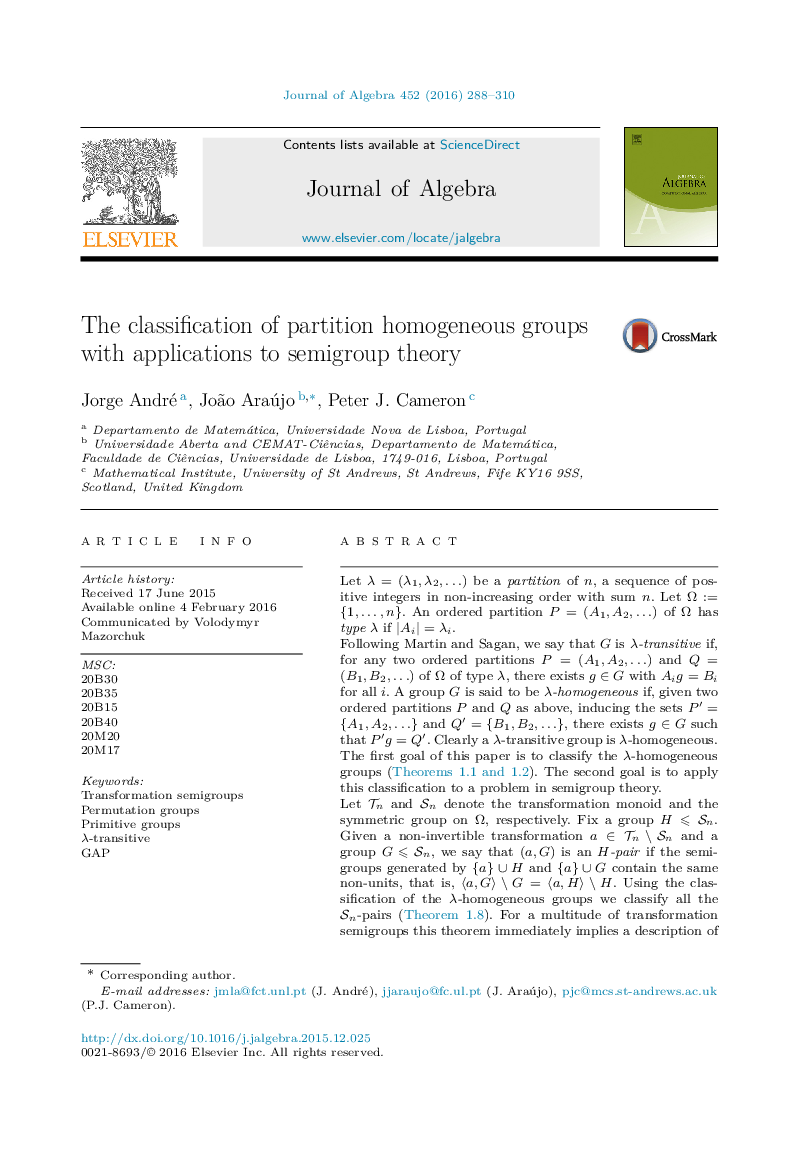| Article ID | Journal | Published Year | Pages | File Type |
|---|---|---|---|---|
| 6414284 | Journal of Algebra | 2016 | 23 Pages |
Let λ=(λ1,λ2,â¦) be a partition of n, a sequence of positive integers in non-increasing order with sum n. Let Ω:={1,â¦,n}. An ordered partition P=(A1,A2,â¦) of Ω has type λ if |Ai|=λi.Following Martin and Sagan, we say that G is λ-transitive if, for any two ordered partitions P=(A1,A2,â¦) and Q=(B1,B2,â¦) of Ω of type λ, there exists gâG with Aig=Bi for all i. A group G is said to be λ-homogeneous if, given two ordered partitions P and Q as above, inducing the sets Pâ²={A1,A2,â¦} and Qâ²={B1,B2,â¦}, there exists gâG such that Pâ²g=Qâ². Clearly a λ-transitive group is λ-homogeneous.The first goal of this paper is to classify the λ-homogeneous groups (Theorems 1.1 and 1.2). The second goal is to apply this classification to a problem in semigroup theory.Let Tn and Sn denote the transformation monoid and the symmetric group on Ω, respectively. Fix a group H⩽Sn. Given a non-invertible transformation aâTnâSn and a group G⩽Sn, we say that (a,G) is an H-pair if the semigroups generated by {a}âªH and {a}âªG contain the same non-units, that is, ãa,GãâG=ãa,HãâH. Using the classification of the λ-homogeneous groups we classify all the Sn-pairs (Theorem 1.8). For a multitude of transformation semigroups this theorem immediately implies a description of their automorphisms, congruences, generators and other relevant properties (Theorem 8.5).This topic involves both group theory and semigroup theory; we have attempted to include enough exposition to make the paper self-contained for researchers in both areas.The paper finishes with a number of open problems on permutation and linear groups.
